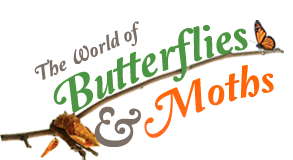Why do we still collect butterflies?
Why do we still collect butterflies?
An article published in the guardian newspaper emphatically stated “The hobby of butterfly collecting is over – it’s all about conservation now” – the article went on to explore the history and passion of butterfly collecting including famous participants such as Prime Ministers Neville Chamberlin and Sir Winston Churchill. The thrust of the argument focused on the past and how insect collecting had been a high class Victorian hobby, reaching it’s peak just prior to WWI after which the hobby died a slow death. Yet how did a once perfectly acceptable pastime become a social anathema? Well according to the article social deconstructionists of the 1960’s awakened the post-war generation to the so-called harmful and oppressive traditions of the past. Progressive’s called for an overhaul of society thus butterfly collecting fell beneath the proverbial axe of enlightenment. Surprisingly quickly entomology collectors – along with egg collectors – were declared archaic, self-indulgent and immoral.
Therefore today “no one would encourage their children to chase butterflies” – or so the writer argues. I’m not sure I agree, the Amateur Entomological Society’s bug club encourages responsible field activity. Furthermore when I recall my childhood no one encouraged me to chase butterflies, I just did, as we all did; not because we wanted to kill our quarry but rather we had a natural curiosity to engage insects in a practical way. Of course society’s new paradigm contests we are now more civilized and grasp the fragility of the natural world and therefore wish to engage butterflies through the camera not a net. Shockingly multiple generations have been indoctrinated with this false dichotomy. However this style of distance learning, the hands-off approach never entered our young minds. Entomology has always been hands-on; to find and collect, rear and breed, to interact, an epistemological quest. Consequently I am not convinced butterfly collecting is a purely cultural phenomena, because humans appear hard wired to practically engage the natural world.
Ironically the Guardian’s ‘butterfly collecting is over’ article acknowledges the past advantages of children interacting with nature, for to catch a butterfly you must know something of it’s habitat, characteristics and life cycle. To breed and rear butterflies you must identify larval host plants, tree’s, etc. You learn how to navigate habitat causing the least damage. These are knowledge bases lost to recent generations who have heard the mantra ‘remove yourself from the subject – take a photograph, record and collate – but never touch – that would be interference and we must not do that’ yet how often the ill informed photographer unwittingly treads down the host foodplant. The Guardian writer back tracks somewhat on his final analysis of butterfly collecting saying:
“[it is] unfashionable to say so, but collecting probably never did much harm: so long as the habitat continues to support them, insect dynamics make responsible collecting infinitely sustainable. Spiders consume far more butterflies than the collector ever did. Intensive farming, forestry and urban development have done the damage by wiping out their habitats for ever. In that sense, we are all guilty.”
So why the decline in butterflies? Habitat loss, intensive farming and the use of chemicals. Even the way we tend our own garden’s, the obsession with perfection with no place for weeds contributes to species decline. Can a species be over collected? Yes of course, but a pejorative response or introduction of hardline legislation is not helpful. Rather a balanced approach to collecting alongside protecting vulnerable species is required; the two can coexist.
There is of course that minority voice that simply states ‘killing insects is cruel’ but such statements a wholly subjective – whether you believe it is ethically right or wrong to collect butterflies is really a personal choice, a presupposition often based on misinformation or emotion. The World of Butterflies and Moths endeavors to keep alive the fascinating hobby of insect collecting, we actually owe this to our children and the generations to come. A senior collections manager at McGuire Center for Lepidoptera & Biodiversity at Florida Museum of Natural History, perceptibly wrote:
“Who doesn’t love butterflies? While most people won’t think twice about destroying a wasp nest on the side of the house, spraying a swarm of ants in the driveway, or zapping pesky flies at an outdoor barbecue, few would intentionally kill a butterfly. Perhaps because of their beautiful colors and intricate patterns, or the grace of their flight, butterflies tend to get a lot more love than other types of insects. As a caretaker of one of the world’s largest collections of preserved butterflies and moths, and as a very active field researcher, I spend a lot of time explaining why we still need to collect specimens. All these cases of dead butterflies contribute greatly to our understanding of their still-living brothers and sisters. Collections are vitally important – not only for documenting biodiversity, but also for conservation.”
So butterfly collecting is not a thing of the past. There is still a place for butterfly and insect collecting, be that the expert biologist, the private collector, the artist, the educator or the photography, so long as no species are over collected and where possible high volume species are captive bred for commercial purposes, then actually collectors do more good than harm. Knowledge bases are expanded, a new generation is trained, habitat is secured and economically poor communities are sustained. Now that’s possibly a new perspective?
Rev. Jason Wright B.Th., M.A.T.S (02/02/2024)
Articles: “Why the Hobby of Butterfly collecting is over” – “Why we still collect butterflies“
